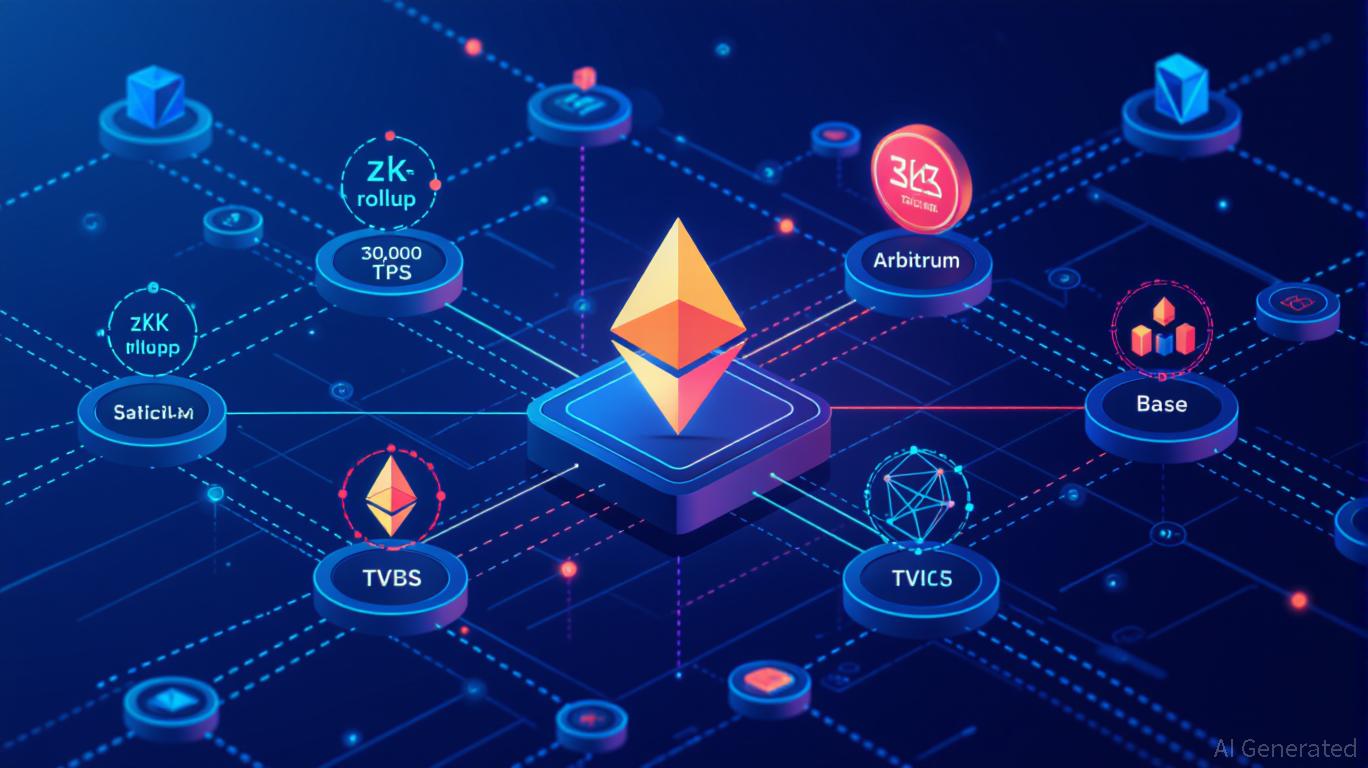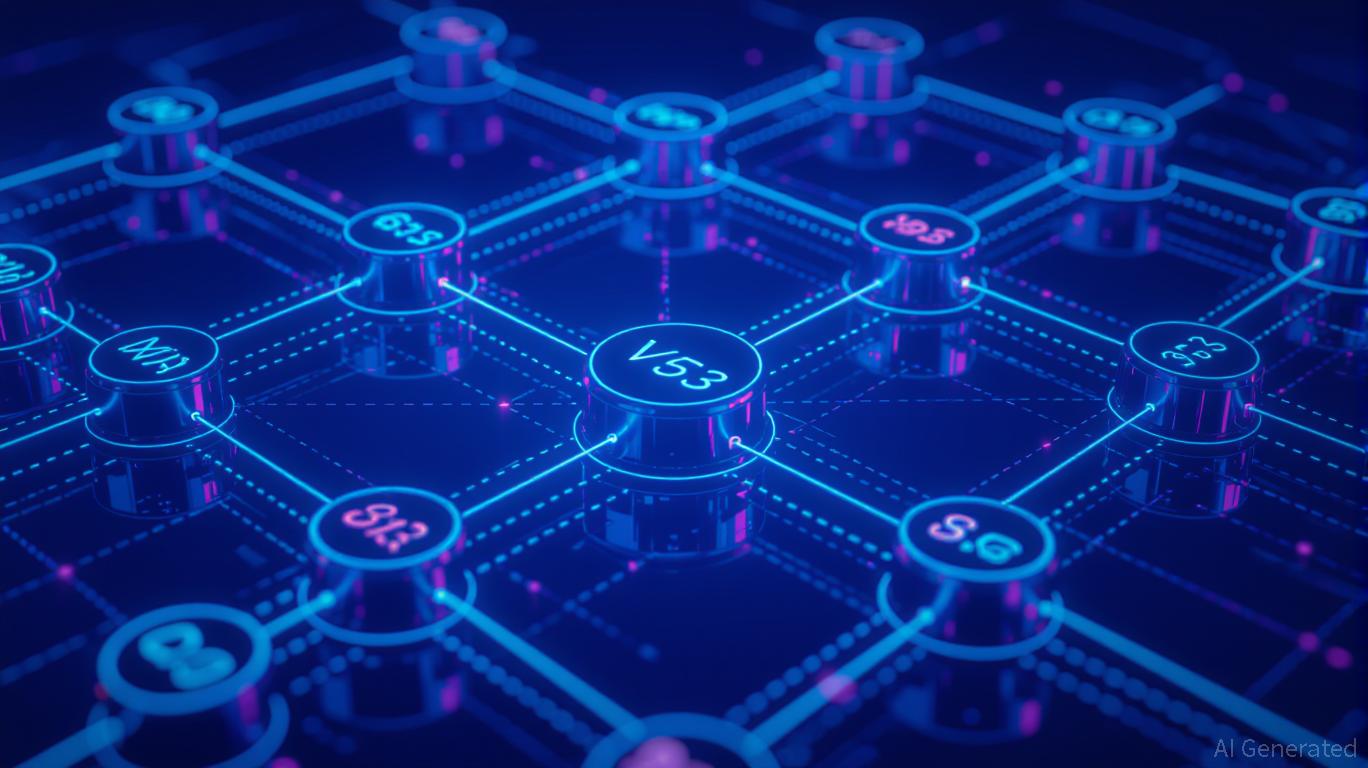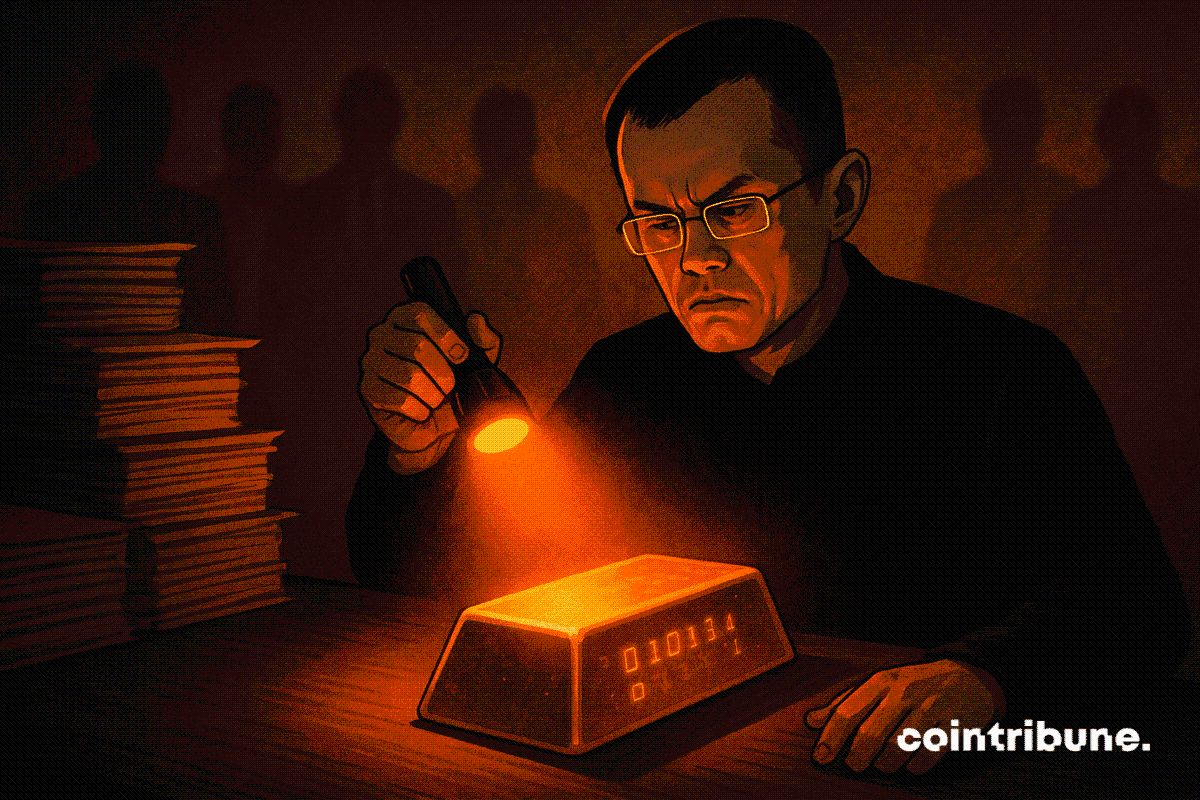Vitalik Buterin Supports zkSync and Shares Insights on the Evolution of Scalable Ethereum Solutions
- Vitalik Buterin endorsed zkSync as Ethereum's key scalability solution, praising its ZK-rollups for security and 30,000 TPS capacity post-Atlas upgrade. - The endorsement drove ZK token's 120% surge to $0.74, attracting 30+ institutions evaluating zkSync's enterprise-focused Prividium. - zkSync faces competition from Arbitrum ($16B TVL) and Base (Coinbase-backed), but gains traction via institutional partnerships and privacy-centric design. - Investors must balance zkSync's technical innovation with Arbi
Buterin’s Support: Driving zkSync’s Growth
Buterin’s endorsement of zkSync reflects his confidence in zero-knowledge (ZK) rollups as the best route for Ethereum’s expansion. In a widely referenced remark, he called zkSync’s impact “undervalued and significant,” stressing its ability to process transactions off-chain while safeguarding the Ethereum mainnet’s security,
Buterin’s influence was not just in words. After his endorsement, zkSync’s native token (ZK) jumped 120% to $0.74 in just two days, pushing its market value close to $600 million—a level not reached since May 2025,
Technical Comparison: zkSync and Its Rivals
Although zkSync has made significant strides, it faces tough competition from optimistic rollup solutions like
Scalability:
zkSync’s ZK-rollups use cryptographic proofs for immediate transaction confirmation, unlike optimistic rollups, which depend on fraud proofs and can cause delays,Coinbureau. With the Atlas upgrade’s 30,000 TPS, zkSync is well-positioned for high-volume applications, though Arbitrum’s established DeFi network and Base’s rapid user growth keep them competitive,RealSatoshiclub.Security:
ZK-rollups naturally offer trustless security, as mathematical proofs validate transactions. In contrast, optimistic rollups rely on external parties to detect fraud, which can introduce risks,Coinbureau. Buterin’s latest suggestion to swap Ethereum’s modexp precompile for standard EVM code further boosts ZK-rollup efficiency, though it results in a 15-25% increase in gas costs,Coinotag.Adoption:
Arbitrum leads in total value locked (TVL), boasting $16 billion within its ecosystem, while Base, backed byCoinbase, has reached $4.94 billion in TVL and holds a 43.5% market share,PowerDrill. zkSync, meanwhile, is narrowing the gap through partnerships with institutions and a focus on privacy-first applications,Yahoo Finance.

Investment Outlook: Weighing Innovation Against Market Forces
The outlook for Layer-2 investments is determined by three main elements: technological progress, ecosystem expansion, and institutional participation.
zkSync’s Tokenomics and Institutional Interest:
zkSync’s updated tokenomics, which directs network income toward token buybacks and burns, has created deflationary pressure and linked ZK’s value to platform activity,Cryptopolitan. This approach, together with the Atlas upgrade’s improved performance, has drawn over $300 million in daily trading volume,Coinotag. Still, critics point out that zkSync’s ecosystem trails Arbitrum’s in terms of developer resources and DeFi integration,RealSatoshiclub.Arbitrum’s Established Network:
Even though Base has taken some market share, Arbitrum’s $16 billion TVL and more than 250 protocols highlight its strong position in DeFi,PowerDrill. Its recent integration with BitcoinOS, which allows cross-chain bridging, further broadens its capabilities,Coindesk. However, its dependence on optimistic rollups could limit its appeal for privacy-focused sectors.Optimism’s Uncertainty:
While Optimism’s Superchain initiative and retroactive public goods funding are notable, the absence of clear post-Buterin data (such as TVL and transaction numbers) makes its investment case less certain,Coinotag. Broader Ethereum expansion, including $1.37 billion in institutional staking, indirectly supports Optimism but does not compensate for its lack of data,Coinotag.
Conclusion: A Multi-Layered Investment Strategy
Vitalik Buterin’s backing has positioned zkSync as a central player in Ethereum’s scaling story, but investors should take a balanced approach. Those seeking advanced technology and strong institutional ties may find zkSync’s ZK-rollup design and Atlas upgrade particularly appealing for the long term. Meanwhile, Arbitrum and Base, with their established TVL and user communities, offer more stable opportunities for benefiting from DeFi’s expansion. Optimism, despite its innovative approach, needs more transparent data to warrant inclusion in a well-rounded portfolio.
As Ethereum’s scaling competition evolves, the protocols that best combine technical excellence with widespread adoption will come out on top. While Buterin’s vision is reflected in zkSync’s progress, the ultimate outcome will be determined by real-world execution rather than endorsements alone.
Disclaimer: The content of this article solely reflects the author's opinion and does not represent the platform in any capacity. This article is not intended to serve as a reference for making investment decisions.
You may also like
ChainOpera AI Token Plunge: An Alert for Cryptocurrency Initiatives Powered by AI
- ChainOpera's COAl token collapsed from $20 to $1.50, exposing flawed risk management in AI-driven blockchain projects. - The crash mirrors C3.ai's 55.2% stock drop, highlighting governance risks and leadership instability in AI ventures. - Investors must demand technical alignment, transparent governance, and team expertise to avoid speculative pitfalls. - Regulatory frameworks like EU AI Act emphasize balancing innovation with accountability in high-risk crypto-AI projects.

MMT Token's Token Generation Event and Its Impact on Blockchain Capital Utilization
- MMT Token's 2025 launch on Sui blockchain redefines DeFi capital efficiency through ve(3,3) tokenomics and CLMM liquidity mechanisms. - TGE allocated 204.1M tokens with vesting schedules, generating 1330% price surge on Binance via exchange listings and cross-chain integration. - Ve(3,3) model locks tokens for governance rights and fee-sharing, aligning incentives while reducing short-term selling pressure. - Protocol's $12B 30-day volume and institutional-grade roadmap contrast with traditional MFS fund

Gold’s Audit Problem Resurfaces as CZ Challenges Its Verifiability

Stablecoins Surpass Bitcoin as Go‑To Cryptocurrency for Illicit Transactions
